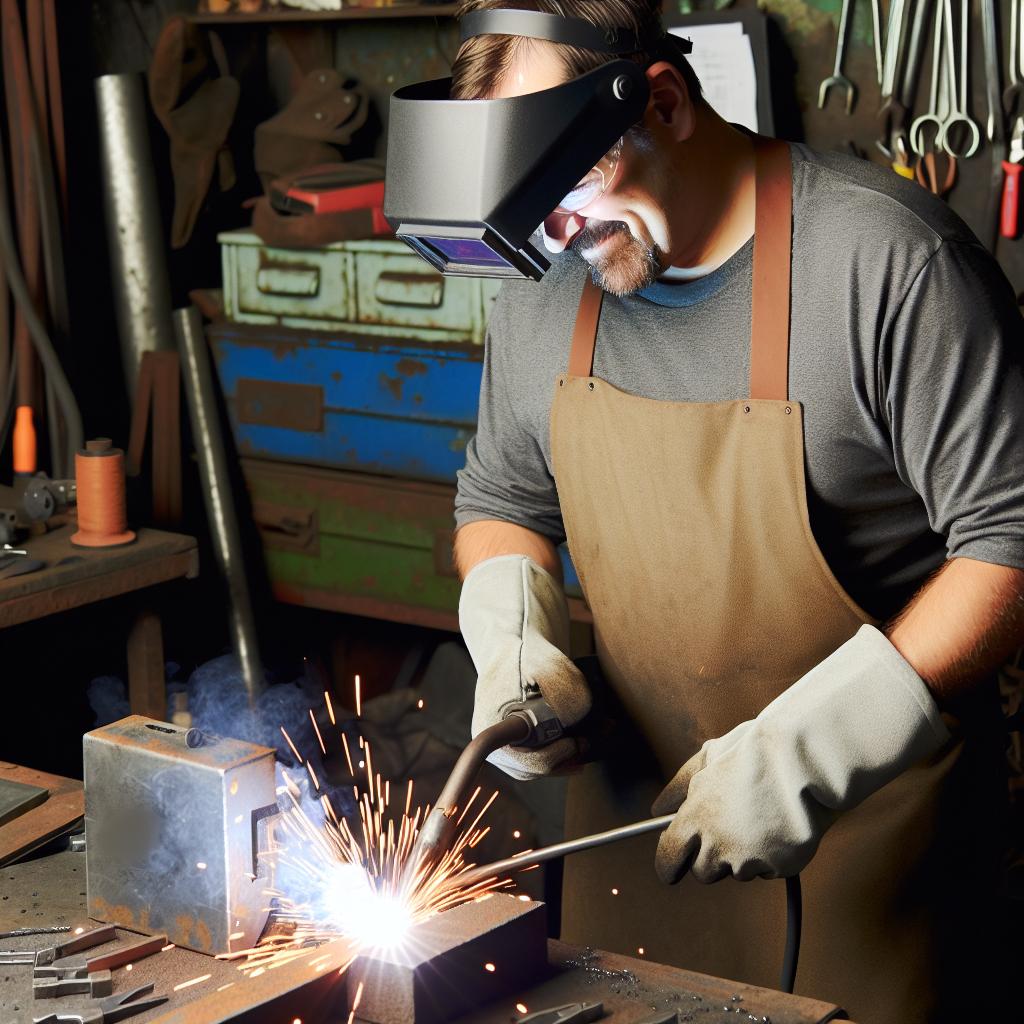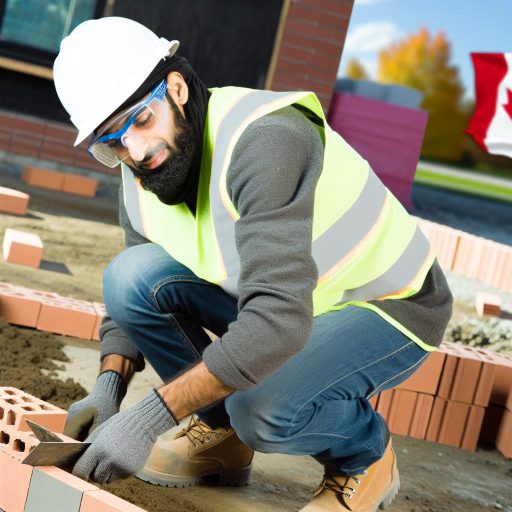Understanding the Role and Responsibilities of a Metal Fabricator in Canada
Job Overview
A metal fabricator shapes and assembles metal structures.
This role requires a strong understanding of blueprints and schematics.
Metal fabricators work with various types of metals, including steel and aluminum.
They perform tasks like cutting, bending, and welding metals.
Additionally, they often use specialized machinery for precision work.
Key Responsibilities
Metal fabricators must read and interpret technical drawings accurately.
They select appropriate materials for each project based on specifications.
Furthermore, they operate tools such as saws, grinders, and welding equipment.
Quality control is essential; thus, they inspect finished products regularly.
Moreover, fabricators must maintain a safe and organized workspace.
Required Skills
Attention to detail ensures quality in every fabrication process.
Problem-solving abilities are crucial for troubleshooting issues that arise.
Strong communication skills help in collaborating with team members.
Physical stamina is important due to the demands of the job.
Finally, adaptability allows metal fabricators to handle various tasks effectively.
Work Environment
Most metal fabricators work in manufacturing facilities.
They may also work on construction sites for assembly projects.
Safety gear, such as goggles and gloves, is mandatory in this profession.
Job hours often include shifts, given the nature of production demands.
Lastly, the work environment can be noisy due to machinery operations.
Required Educational Qualifications and Training Programs
Understanding Educational Requirements
Metal fabricators typically require a high school diploma.
This foundational education provides necessary skills in mathematics and technical drawing.
Many employers also prefer candidates with post-secondary education.
Completing a program in metal fabrication or welding enhances job prospects.
Training Programs in Canada
Various institutions offer training programs across Canada.
Unlock Your Career Potential
Visualize a clear path to success with our tailored Career Consulting service. Personalized insights in just 1-3 days.
Get StartedLocal community colleges frequently provide certificate or diploma courses.
Programs usually include hands-on training and theoretical knowledge.
The duration of these programs can range from six months to two years.
Apprenticeship Opportunities
Another pathway is through apprenticeship programs.
These programs combine on-the-job training with classroom instruction.
Apprenticeships typically last four years and include a diverse range of experiences.
Many employers actively support apprenticeship training to foster skilled workers.
Certifications and Licenses
Acquiring relevant certifications can bolster your qualifications.
Organizations such as the Canadian Welding Bureau offer certifications.
Certification often requires passing specific exams and demonstrating practical skills.
Holding a recognized certification can enhance your employability in the field.
Resources for Metal Fabricators
Several organizations provide resources and networking opportunities.
The Canadian Institute of Steel Construction offers valuable industry insights.
Local unions and trade associations also provide support and training resources.
Networking can lead to job opportunities and professional development.
Explore Apprenticeship Opportunities
Understanding Apprenticeships in Metal Fabrication
An apprenticeship is a vital first step in a metal fabrication career.
It combines practical training with classroom instruction.
Moreover, apprenticeships provide essential industry knowledge.
Working alongside experienced fabricators enhances skill development.
Finding the Right Apprenticeship Program
Research various programs offered across Canada.
Consider programs affiliated with trade schools or unions.
Additionally, industry associations can provide valuable insights.
Look for programs that offer mentorship opportunities.
Benefits of Hands-On Experience
Hands-on experience is critical for skill mastery.
It allows you to apply theoretical knowledge in real-world settings.
This experience builds confidence and competence in your abilities.
Furthermore, it enhances your resume for future job applications.
Networking Opportunities
An apprenticeship fosters connections within the industry.
Networking can lead to job opportunities in the future.
Engaging with fellow apprentices and mentors is beneficial.
These relationships can provide support throughout your career.
Potential for Job Placement
Many apprenticeship programs offer job placement assistance.
This support can significantly ease the transition into the workforce.
Programs often have established relationships with local companies.
As a result, successful apprentices may find immediate employment.
Discover More: Ironworker Skills and Tools Every Beginner Should Master
Key Skills Needed for Success in Metal Fabrication
Technical Skills
Technical skills form the backbone of metal fabrication careers.
Proficiency in welding techniques is essential.
Metal fabrication requires knowledge of blueprints and schematics.
Familiarity with various machining tools is vital.
Additionally, understanding metallurgy enhances material selection.
Accuracy in measurements ensures quality outcomes.
Operating CNC machines is crucial in modern fabrication.
Knowledge of safety protocols prevents workplace accidents.
Soft Skills
Soft skills complement technical abilities in metal fabrication.
Strong communication fosters teamwork and project success.
Problem-solving skills enable quick resolutions to challenges.
Attention to detail enhances craftsmanship and product quality.
Time management allows meeting tight deadlines effectively.
Adaptability is key in response to evolving technologies.
Moreover, confidence influences decision-making and leadership.
Continuous Learning
Engaging in ongoing education is crucial in this field.
Taking workshops and courses expands professional skills.
Networking with industry experts promotes knowledge sharing.
Staying updated with industry trends ensures competitiveness.
Furthermore, certifications can enhance job prospects.
Find Out More: How Roofers Ensure Quality in Large-Scale Projects
Learn About Safety Standards and Certifications
Importance of Safety Standards
Safety standards are essential in the metal fabrication industry.
They protect workers from potential hazards in the workplace.
Following these regulations promotes a safe working environment.
Moreover, it helps prevent accidents and injuries.
Canadian Safety Regulations
In Canada, the Occupational Health and Safety (OHS) Regulations set the foundation for workplace safety.
Each province has its own specific OHS rules.
For instance, British Columbia has WorkSafeBC standards.
Meanwhile, Ontario follows the guidelines from the Ministry of Labour.
Understanding provincial regulations is critical for compliance.
Relevant Certifications
Certifications enhance your qualifications as a metal fabricator.
Organizations like the Canadian Welding Bureau (CWB) provide certifications.
These certifications verify your welding skills and knowledge.
Additionally, they indicate adherence to safety protocols.
Types of Certifications
Welders in Canada can pursue several types of certifications.
- Certified Welder Program
- Welding Supervisor Certification
- Canadian Standards Association (CSA) Certification
Each certification serves a specific purpose within the industry.
Choosing the right certification can bolster your career opportunities.
Staying Informed on Safety Practices
Regular training is crucial for maintaining safety standards.
Workshops and seminars can provide updates on best practices.
Networking with industry professionals can also enhance your knowledge.
Stay proactive in learning about new safety measures and technologies.
You Might Also Like: A Day in the Life of a Skilled Upholsterer

Familiarize Yourself with Industry Tools, Equipment, and Technologies Used in Metal Fabrication
Essential Tools for Metal Fabrication
Understanding essential tools is crucial for every metal fabricator.
Start by learning about basic hand tools like hammers and chisels.
Wrenches and pliers also play significant roles in assembly and adjustments.
Next, familiarize yourself with power tools.
Common power tools include grinders, saws, and drills.
Welding machines are vital in metal fabrication, providing strong joints.
Additionally, cutting tools can help shape and trim metal materials.
Key Equipment Used in the Field
Metal fabrication shops utilize various equipment for efficiency.
Press brakes are essential for bending metal into specific shapes.
Shears are used to cut large sheets of metal quickly.
Furthermore, CNC machines allow for precision in cutting and shaping.
Understanding these machines can enhance your fabrication skills.
Technological Advancements to Consider
In recent years, technology has transformed metal fabrication.
Computer-aided design (CAD) software has become integral in the design process.
This software enables the creation of detailed schematics and layouts.
Robotic welding systems improve efficiency and consistency in welding tasks.
It’s beneficial to stay updated on innovations in the industry.
Safety Equipment and Practices
Safety should be a top priority in metal fabrication.
Wearing the right personal protective equipment (PPE) is crucial.
Common PPE for metal workers includes helmets, gloves, and goggles.
Ensure you understand safety protocols in the workplace.
This knowledge can help prevent accidents and injuries.
Uncover the Details: Steps to Becoming a Successful Ironworker in Canada
Networking with Professionals in the Field
Building Connections
Networking is vital for launching your career as a metal fabricator.
Start by attending industry events and trade shows.
These gatherings provide excellent opportunities to meet potential employers.
Additionally, consider joining local fabrication groups or associations.
Engage actively on social media platforms like LinkedIn.
Informational Interviews
Conduct informational interviews with experienced professionals.
This practice will give you insights into the industry landscape.
Prepare thoughtful questions to maximize your learning experience.
Ask about their career paths and the skills they found essential.
Follow up with a thank-you note to leave a good impression.
Online Communities
Explore online forums and communities related to metal fabrication.
Participate in discussions to learn from others’ experiences.
Share your knowledge and seek advice from seasoned members.
These interactions can help you become more visible in the field.
Finding Job Opportunities
Networking can open doors to unadvertised job openings.
Leverage connections for potential referrals or recommendations.
Keep an eye out for job postings shared within your network.
Attend workshops that focus on relevant skills and training.
These sessions often attract industry professionals as speakers.
Prepare a Strong Resume and Portfolio
A strong resume is essential when starting a career as a metal fabricator.
It showcases your skills, experience, and knowledge in the industry.
Employers look for resumes that highlight relevant qualifications.
Clearly outlining your skills helps you stand out among applicants.
Key Components of Your Resume
First, include a concise objective statement at the top.
Next, list your education, emphasizing any certifications in metal fabrication.
Detail your work experience in reverse chronological order.
Quantify your achievements to demonstrate your impact and capabilities.
Lastly, tailor your resume for each job application for maximum effectiveness.
Building Your Portfolio
A portfolio complements your resume by showcasing your practical skills.
Include photos of your completed projects in metal fabrication.
Describe each project with specific details regarding your role.
Adding client testimonials can enhance your portfolio’s credibility.
Be sure to highlight any unique techniques or processes you employed.
Showcasing Relevant Projects
Focus on including projects that align with the roles you seek.
Demonstrating versatility can make you appealing to various employers.
Organize your portfolio in a visually appealing manner to attract attention.
Consider using an online platform to present your portfolio effectively.
Continuously Update Your Resume and Portfolio
Keep your resume and portfolio current as you gain new skills.
Regular updates reflect your growth and commitment to your profession.
Seek feedback from mentors to improve your presentation and content.
Finally, always be ready to adapt your materials for different opportunities.
Additional Resources
I am Nigerian, a skilled welder and metal fabricator. I want to …




